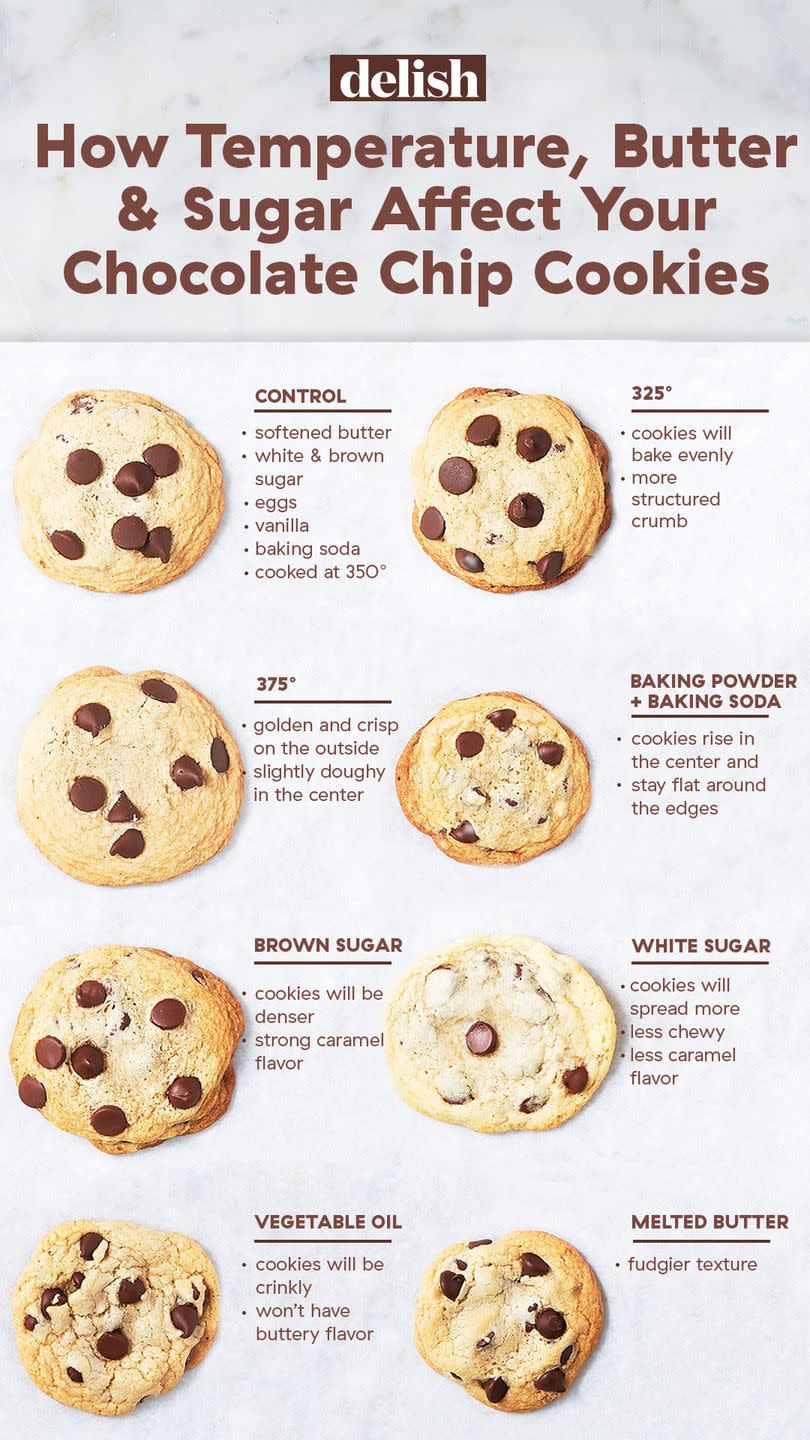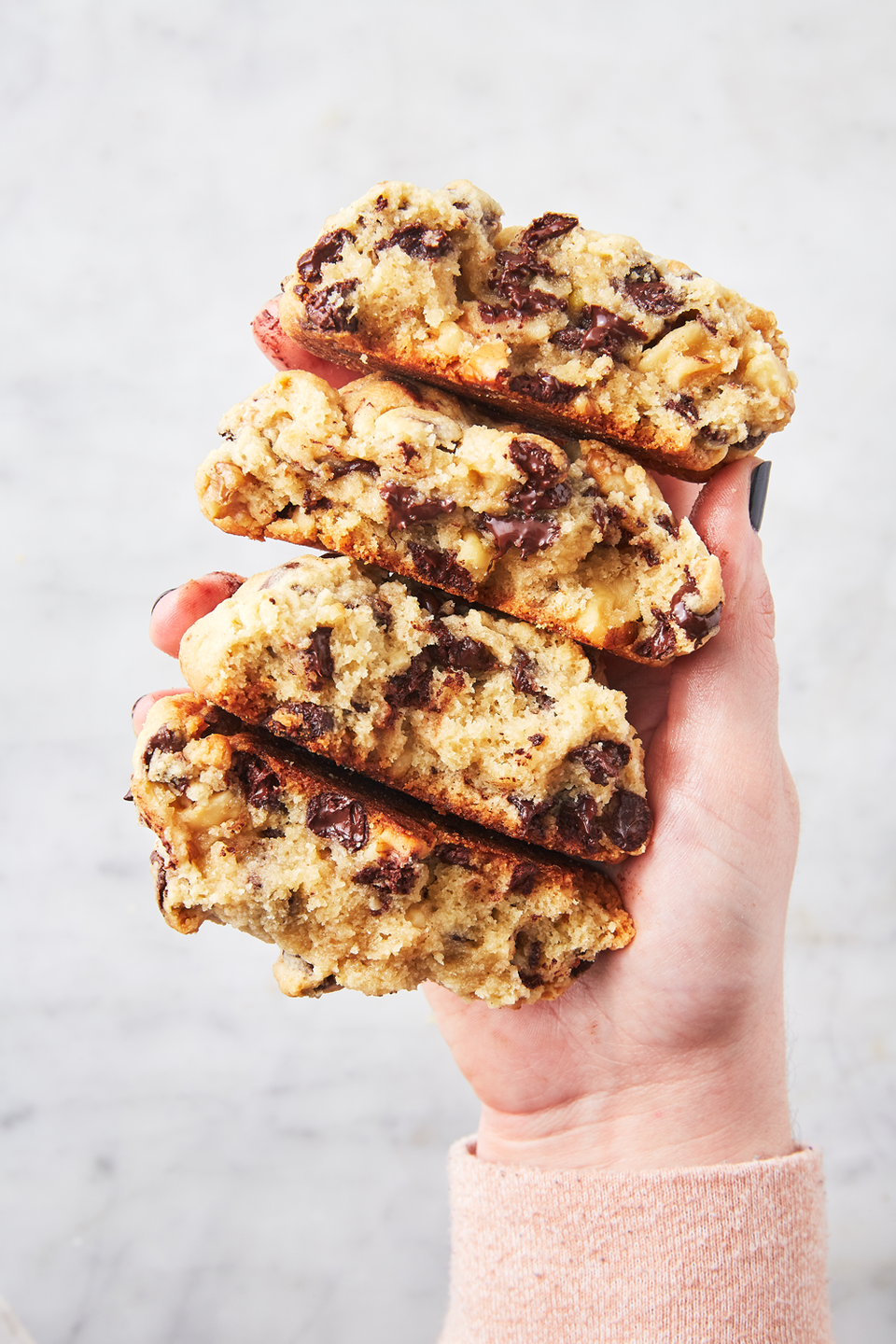This Is How Temperature, Butter, And Sugar Affect Your Chocolate Chip Cookies

Have you ever looked at a chocolate chip cookie recipe and questioned it? You're not alone. It's what we do everyday. Why this temperature? Why not melted butter? Can I sub in another fat or use a different sugar? What we found surprised us, most of our answers hidden in this perfect—dare I say, better—Copycat Levain Chocolate Chip Cookie. The recipe took us many, many attempts, teaching us the ins and the outs of the chocolate chip cookie along the way. (It even sent the Delish team on a quest to develop our own perfect chocolate chip cookies.)
We used our classic chocolate chip cookie as the control, then changed a single variable in each batch. Here's what we found out about how temperature, butter, sugar, and more affect how your cookie turns out.

1. Temperature
350° is the standard temp for a cookie, and it's a great one. Your cookies will bake evenly and the outside will be done at the same time as the inside.
Baking at 325° also results in an evenly baked cookie, but the slower cooking will help yield a chewier cookie. The outsides will be a little softer, too.
If you love slightly underdone cookies, 375° is for you. You'll get the crisp edges while maintaining a doughy, fudgy inside.

2. Baking Powder Vs. Baking Soda
Most people don't know the difference between baking soda and powder. They trust the recipe is using the right one or think they're interchangeable. Well, I hate to break it to you, but they are most definitely not interchangeable.
Our control cookie is made with baking soda. It helps give the cookie the little rise that is needs but also plays an important roll in spreading and coloring the cookie. Chocolate chip cookies made without baking soda will come out very blonde (along with some other issues).
If you were to use a little of each leavener, you'd get a cookie that has a bit of a hump in the middle. It'd also be cakier, if you're into that sort of thing.
3. The Sugars
You'll see chocolate chip cookie recipes with ratios of brown to white sugar all over the place. More brown, more white, equal parts. What is best? Do I have to use both? Not necessarily.
A cookie made with all brown sugar will be denser and taste like caramel. If you love richer cookies, brown sugar is your go-to.
All white sugar surprised us. This cookie spread the most out of all our variables. If you like crispier cookies and want a stronger butter flavor, go with white sugar.

4. Butter or Oil
Melted, softened, or...oil? It all makes a difference. Our control cookie, as with most cookies, uses softened butter, and this recipe tends to be a bit cakier.
A cookie made with the same amount of melted butter will give you a fudgier, chewier cookie. It helps it spread out more and gives you some nice divots to catch more chocolate.
Cookies can also be made with vegetable oil. Your cookies will lack the butter taste, but it results in one pretty cookie with all those crinkles. The oil will let the vanilla and chocolate flavors sing!
Now, good luck picking which direction you want to go in!
You Might Also Like

